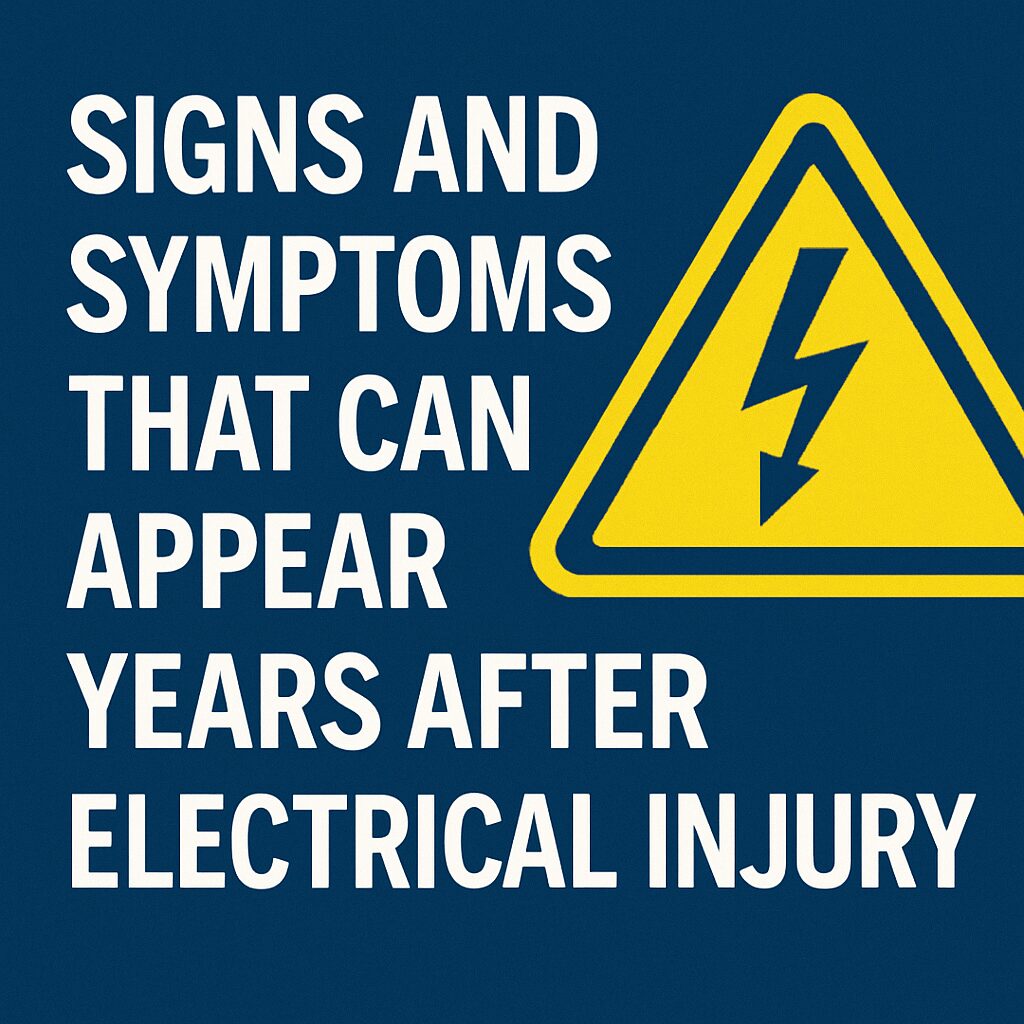
Signs and Symptoms That Can Appear Years After Electrical Injury
When one hears the word injury, it is easy to imagine something visible: blood, torn skin, or an obvious wound. But not all injuries show themselves on the surface. Some develop quietly, giving rise to symptoms without ever offering the “proof” of a physical mark. This is often the case with electrical injuries, even when there is no clear entry or exit wound.
How Electrical Shock Occurs
Electrical shock happens when the body becomes part of an electrical circuit. This can occur through lightning, household outlets, damaged cords, appliances, power lines, and other sources of current.
Electricity must travel through a complete circuit, meaning it requires two points of contact. Birds perched on power lines remain unharmed because they touch only one point. Humans, however, often touch a wire and the ground, completing the circuit and allowing current to pass through the body.
Why Electrical Injuries Can Cause Hidden Damage
A fundamental equation helps explain what occurs internally:
Voltage (V) = Current (I) × Resistance (R)
Voltage is the force driving electrical charge. The harm done to the body depends on:
- how much current flows,
- the resistance of the tissues it passes through,
- and whether the current is alternating (AC) or direct (DC).
Different tissues offer different levels of resistance:
- Low resistance: nerves, blood, cardiovascular tissues
- Moderate resistance: muscles
- High resistance: fat and bone
Counterintuitively, high-resistance tissues often sustain more thermal injury, because electrical energy is converted into heat, causing deep burns and coagulation necrosis.
AC vs. DC: Why the Type of Current Matters
Alternating Current (AC)
Used in homes, buildings, and many appliances.
Effects may include:
- muscle tetany (the victim cannot let go)
- cardiac arrhythmias
- often no visible entry or exit wounds
Direct Current (DC)
Flows in one direction, typical of lightning, car batteries, and defibrillators.
Effects may include:
- clear entry and exit wounds
- abrupt muscle contractions
- internal thermal damage
How Much Current Causes Harm?
Physiological responses vary by current intensity (amps):
Current mA Response
0.2 to 2 an electrical sensation
1 to 2+ a painful shock
3 to 5 let-go threshold for children
6 to 10 minimum let-go threshold for adults
10 to 20 possible seizure at the contact point
22 inability to let go for 99% of adults
20 to 50 possible seizures
50 to 100 possible life-threatening heart rhythms
Electrical injuries can therefore present with a wide variety of symptoms, immediately after the incident or developing slowly over months or even years.
Immediate symptoms may include:
- burns
- seizures
- loss of consciousness
- headache
- tingling or numbness
- myocardial infarction
- irregular heartbeat
Symptoms that may appear months or years after an electrical injury include:
- chronic body pain
- depression or anxiety
- tingling or numbness
- irregular heart rhythm
- insomnia
- PTSD
- fatigue
- headaches
- muscle spasms
- stiff joints
- fainting
- loss of balance
- memory loss
- cardiac complications (dysrhythmias, ischemia, decreased ejection fraction)
- neurological changes
These long-term symptoms can be especially challenging. Many physicians may not immediately connect these issues to a past electrical injury, making treatment difficult and leaving patients feeling misunderstood or hopeless. This is why individuals with persistent or unexplained symptoms are often referred to specialists with experience in electrical trauma.
If you or a loved one has experienced an electrical shock, do not hesitate to seek help. Symptoms that arise without visible injuries are still very real, and deserve medical attention. Early evaluation can help determine the best course of action and provide clarity during what can be a confusing recovery process.
At the Chicago Electrical Trauma Rehabilitation Institute (CETRI), we see patients at all stages of recovery. Many come to us as a last resort, searching for answers after years of unexplained symptoms. Our multidisciplinary team evaluates each patient and develops individualized recommendations for treatment and rehabilitation.
If you have experienced an electrical shock and are noticing any of the symptoms mentioned above, please do not hesitate to contact us.
